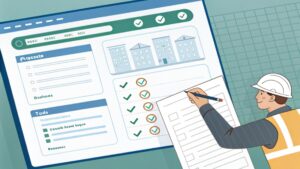Lab-Grade Accuracy Measuring Tools in Science and Research
Whether you’re aligning a doorframe, machining metal parts, or designing a garment, measuring tools help ensure that your work is accurate, consistent, and up to standard.
In this article, we’ll explore the most commonly used measuring tools, their applications, tips for getting the most out of them, and how modern tech is changing the game.
What Are Measuring Tools?
Measuring tools are instruments used to determine length, distance, angle, volume, weight, and other physical dimensions. These tools are crucial across industries—from construction and manufacturing to healthcare and science—where accuracy directly impacts safety, quality, and performance.
Common Types of Measuring Tools
Here’s a breakdown of some of the most frequently used measuring tools, and where they’re typically applied:
1. Ruler (or Scale)
Used for basic linear measurement. Simple, reliable, and ideal for small tasks.
2. Measuring Tape
Perfect for longer distances or curved surfaces, commonly used in construction and interior design.
3. Calipers (Vernier or Digital)
Delivers precise internal, external, and depth measurements, useful in mechanics and engineering.
4. Micrometer
Used for ultra-fine measurements, often in mechanical or manufacturing applications.
5. Protractor
Measures angles and is essential in drafting, architecture, and woodworking.
6. Spirit Level (Bubble Level)
Ensures perfect vertical or horizontal alignment.
7. Laser Distance Meter
A modern tool that uses laser technology to measure distances quickly and accurately.
8. Weighing Scale
Used for determining mass or weight in commercial, industrial, and scientific settings.
Advanced and Digital Measuring Tools
As technology has advanced, so have measuring tools. Here are a few modern solutions transforming how we measure today:
Digital Calipers & Micrometers
These tools provide clear digital readouts, reducing human error and increasing speed.
Laser Levels
Offer line and dot projections for perfect leveling and alignment in large spaces.
3D Scanners
Used in manufacturing and design to create digital models of real-world objects with extreme accuracy.
Measuring Apps & Software
Many professionals now use mobile apps and integrated systems that sync data from digital tools directly to project management software.
Industry-Specific Measuring Tools
Construction: Theodolites, total stations, and laser levels ensure precise site layout and leveling.
Tailoring: Flexible measuring tapes and body measurement tools shape perfect garments.
Manufacturing: CMM (Coordinate Measuring Machines) inspect parts against 3D design files.
Science & Labs: Graduated cylinders, pipettes, and precision balances ensure accuracy in experiments.
Automotive: Feeler gauges, dial indicators, and torque wrenches are used for engine and mechanical work.
Tips for Accuracy and Longevity
- Zero Tools Before Use: Always check that digital tools are calibrated before starting.
- Use Proper Lighting: Visibility can affect how accurately you read measurements.
- Protect Tools from Extreme Conditions: Moisture, dust, and temperature changes can affect performance.
- Log and Track: Keep records of calibration and tool usage for compliance and quality assurance.
Why Measuring Tools Matter More Than Ever
In a world that demands speed, precision, and efficiency, the importance of accurate measurement has never been greater. Whether you’re a seasoned tradesperson or a hobbyist, having the right measuring tools—and using them properly—can mean the difference between a job well done and one that needs redoing.
A Brief History of Measuring Tools
Measurement is one of the oldest skills known to humanity. Ancient civilizations used body parts—like a foot or a cubit (forearm length)—as units. Over time, societies developed standardized tools and systems:
- The Egyptians used knotted ropes for surveying land.
- The Romans built roads using calibrated rods and early versions of odometers.
- The metric system, introduced in the late 1700s in France, became the international standard.
Today’s laser-guided and digital instruments are the result of centuries of innovation rooted in the simple human need for consistent measurement.
Final Thoughts
Measuring tools are more than just accessories—they’re essential to building, creating, and maintaining just about everything around us. From the simplicity of a tape measure to the precision of a digital micrometer, they serve as the foundation of trustworthy craftsmanship and reliable results.
As new technologies continue to shape industries, one thing remains the same: the need to measure, and measure well.













